4月5日,第51個幣安Launchpool開放。兩天后,已有 138 億資金參與,Saga 成為幣安史上最大的 Launchpool。
那麼今天我們就來看看誰是Saga這個短時間內讓18.58萬人拿出138億元參與IEO的大佬。
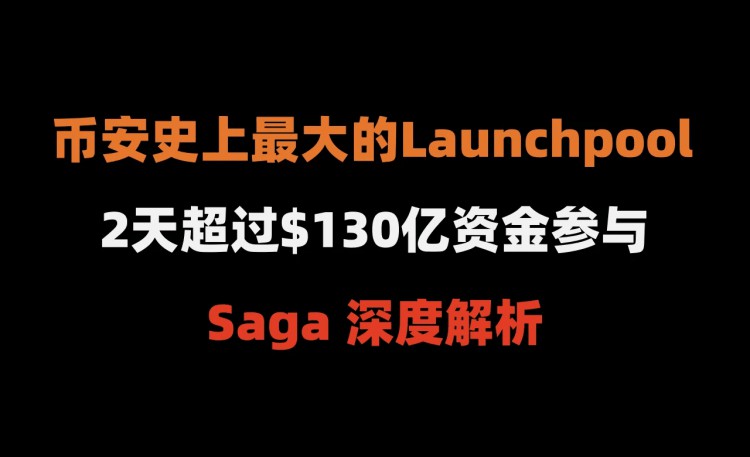
一、簡介
首先,讓我們來看看138億美元資金參與幣安Launchpool背後的動機:
1. 獲得免費籌碼
代幣名稱:Saga ($SAGA)
初始流通量:90,000,000 $SAGA(最大代幣供應量的 9%)
代幣供應總量:1,000,000,000 $SAGA
Binance Launchpool分配:45,000,000 $SAGA(初始流通量的50%)
從通證經濟的角度來看,SAGA獲得免費額度的最大管道是幣安。您只需在平台質押BNB或FDUSD,即可免費分割4500萬枚代幣。這比私募的風險要低得多。所以如果是你的話,只要你有一些儲備金,你就會在這裡質押。質押越多,獲得的籌碼越多,回報率越高。
(二)支付晶片
如果你剛好沒有穩定幣,只有BTC或ETH等優質資產,暫時不想兌換穩定幣,但又不想錯過這次IEO,那麼你會需要使用 DeFi 借貸。
幣安目前穩定幣借貸年化利率為16.84%,幣安Launchpool前十期平均年化報酬率為116%。利用剩下的兩天進行套利是安全無問題的。

二、專案簡介
1.什麼是佐賀?
Saga是基於Cosmos的Layer 1區塊鏈,主要針對遊戲和娛樂領域,讓開發者自行推出並行且可互通的專用鏈。
它使用cosmos SDK創建整合的模組化基礎設施,借用其綜合工具集和SagaOS平台引入專用的可擴展區塊鏈Chainlet來部署智慧合約。
翻譯成成人語言:
Saga希望成為應用鏈的L1。開發者只需支付極低的費用即可在平台上建立自己的應用程式。就像Web2的AWS、阿里雲、騰訊雲一樣。繳交管理費後,您可以開發自己的獨立網站、APP、娛樂平台、遊戲平台、微信小程式等前端工作,將後端安全、付款、數據等事宜交給Saga平台。
Saga has developed its own proprietary blockchain Chainlets, on which developers no longer need to spend too much time deploying code. They can build applications on dedicated chains or small chains and only need to bear a small part of the deployment costs.
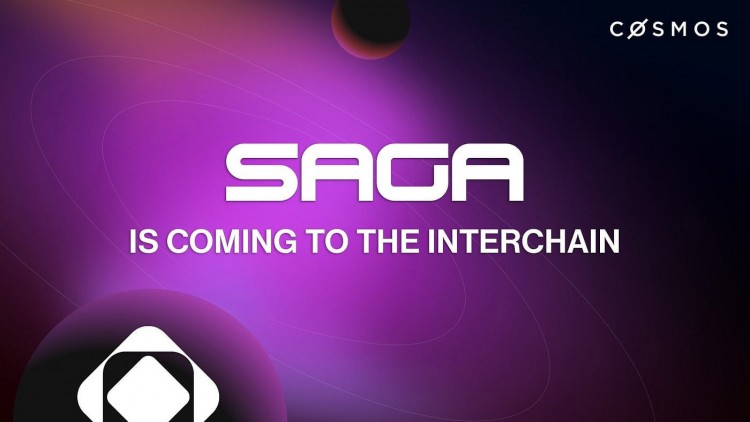
If it weren’t for staking TIA for the Saga airdrop, many people might not know about the Saga project. As a Web3 infrastructure, Saga has provided automatic aggregation functions for Celestia for nearly a year.
The Saga protocol functions like a Dapp-specific service. In other words, Saga is an infrastructure for easily launching other blockchains, similar to WAS in the web2 world. Saga is a blockchain service provider.
In order to avoid too much technical content in this article, which would cause the article to be incomplete, I will first introduce Saga from the service level.
(1) Web3 Dapp development team, existing pain points
For blockchain developers, the first key issue to develop a Dapp is how can users interact smoothly in your Dapp, and how can your product attract players on different public chains?
If you want to bypass L2 with its not-very-secure multi-signature bridges and centralized sequencers, then as a developer you have two options:
Develop your own products into smart contracts and deploy them on L1;
Create your own blockchain from scratch
Using a single chain to solve the consensus, execution, settlement, DA and other aspects of the blockchain is called a single chain. Ethereum is the earliest and most successful single chain, and also the earliest L1. If you develop a smart contract and deploy it on L1, you will face a bad user experience such as network congestion and increased gas fees.
In the past few years, in order to solve various problems of smart contracts, developers have come up with various ways, such as modularization, multi-chain, application chain, etc. to solve the various drawbacks of L1. A commonly used solution now is the "application chain" theory.
Pioneered by Cosmos and subsequently followed by Polkadot, the idea behind this model is to build a dedicated blockchain for one application, which provides sovereignty and full customizability from blockchain to application compared to smart contract solutions.
This solution involves several important factors to consider, it requires managing the chain’s infrastructure, ensuring its own security, attracting validators, and designing a token economic model that can align the interests of validators, stakers, and application users.
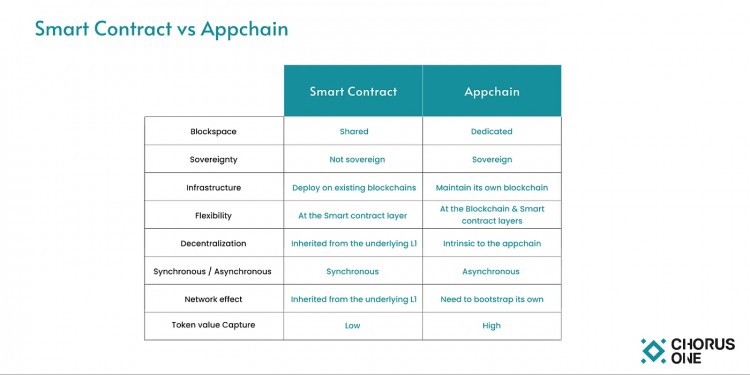
To build a team that meets these factors, you need to recruit people such as:
Engineers with Golang experience who can leverage the Cosmos SDK;
Engineers with Rust experience are needed to extend smart contract functionality to the blockchain;
Researchers experienced in distributed consensus and light client architectures may also be needed to fully leverage the strengths of Tendermint Core and IBC;
In addition to the engineering requirements, a large number of validators need to be recruited to run independent nodes to support the blockchain.
……
Even if you have built a team of high-quality engineers, and they have spent seven or eight months to help you build your Dapp, and have recruited a large number of validators, there is no guarantee of success, for example:
Netflix’s servers crashed on the day of the launch, and the blockchain was halted due to technical issues;
Evmos — a blockchain network built on the Cosmos technology stack — collapsed within days of its launch due to a “serious security vulnerability”;
Osmosis — another Cosmos-based blockchain that sits at the center of IBC — was down for a few days due to a critical bug in its liquidity pools.
You see, if you haven’t made any money yet on a Dapp, you need to spend seven or eight months to build a team. Having a product doesn’t mean it’s successful, and you still need to do a lot of backend operation and maintenance work.
What if there is a service-type L1, that is, an "application chain", which has solved all kinds of problems that may be encountered in the backend? You only need to pay a part of the rental fee and build your product directly on its platform. It is as simple as building a personal website in AWS and building a WeChat applet on the WeChat public platform. You only need to do front-end operations. Isn’t it great?
Let's think back to Web2. The emergence of AWS makes it easier for Web2 companies to host Web applications. If you want to build various Web2 application terminals, such as e-commerce personal websites, web pages, apps, etc., you don't need to do too much backend work, nor do you need to build a computer room or server. You can build it directly on AWS. Users all over the world can log in to your terminal through email and become your consumers. Domestic SaaS platforms such as Alibaba Cloud, Tencent Cloud, and Huawei Cloud also do similar things. You can build WeChat applets on Tencent and do live broadcasts in the applets...
Saga aspires to do the same for blockchain and Web3 projects. Saga’s technology is “chain to launch chains”. The Saga protocol functions like an application-specific blockchain as a service and is a key part of the infrastructure for automatically launching new blockchains.
In other words, Saga is a blockchain used to easily launch other blockchains, called "Chainlets" in the Saga ecosystem. Chainlets are protected by the Saga blockchain and its validators through a mechanism called Interchain Security, a well-known shared security system in Cosmos.

Chainlet launched by Saga is completely permissionless (Application Chain launched by Saga), and developers only need to pay the cost of setting up and maintaining Chainlet with $SAGA tokens to start Chainlet. This is similar to the services provided by AWS and other SaaS platforms, except that the subscription fee here is paid with SAGA tokens to create and maintain Chainlet.

To understand how to start a chain from Saga, let’s look at the following technical analysis:
Since many people say that my post is too long and contains too much technical content, making them dizzy after reading it, in order to alleviate your pain, we will focus on the key points of Saga technology.
Let’s take a look at how Saga has established itself as the Amazon Web Services (AWS) of Web3.
Ethereum has developed into a very mature L1, capable of independently running core components in the blockchain, such as consensus, execution, settlement, DA, cross-chain communication, etc.
This is like the early PC era, when the CPU was the universal solution for all calculations, and all operations were performed by the CPU, such as Intel Pentium, Celeron (or AMD) and other processors. However, with the development of technology, people's demands for computer functions have become higher and higher, and various applications have been developed. If you listen to music, play games, or use QQ, your Pentium CPU will be overloaded and the computer will freeze...
Analogously to the blockchain, ETH is an integrated module that can do everything, so we will find that ETH transactions are sometimes very slow, sometimes an NFT may not arrive for several days, and there are serious delays in playing games on the chain. Is it also overload? If the computer is overloaded, it will crash. If the blockchain is overloaded, there will be problems such as extremely high gas fees and slow blockchain confirmation.
In the PC era, hardware engineers also thought of many ways to deal with the problem of insufficient CPU computing power, but freezes still occurred. Even if you used the most advanced i9, it would still freeze if you used integrated modules. So later, additional dedicated modules outside the CPU appeared. For example, graphics and image applications would be pushed to the GPU, audio applications would be pushed to the sound card, and network loads would be pushed to the network card. These dedicated modules have undergone many improvements and iterations, and finally achieved standardization and commercialization.
Nowadays, applications on PCs are trying to be compatible with specialized modules on the market (such as graphics cards, sound cards, etc.). This is called a modular solution. Once these modular solutions are fully optimized and standardized, it is usually more effective to reintegrate them into a single software package. Most processors and SoCs found today are integrated products that can handle some combination of general computing, graphics computing, audio computing, and network computing.
Likewise, many modules of the modular blockchain architecture will be integrated to improve efficiency.
Once all block production components are moved off the mainnet, just like how CPUs integrate various computing modules into a single SoC for efficiency, future blockchain architectures will also integrate block production modules into a single module, all of which will be split and executed off the mainnet. Saga expects that off-mainnet DA, execution, and settlement logic can be reintegrated into a single component.
Saga builds an infinitely scalable architecture by modularizing the entire off-mainnet block production module and introducing the ability to automatically start these off-mainnet modules.
As shown in the figure below, in Saga's architecture, the main network is called Saga Platform Chain, and the block production component outside the main network is called Chainlet. After these prices are built, it is a new application chain. Developers only need to develop front-end applications on it and do not need to do too much post-computing and operation and maintenance work.
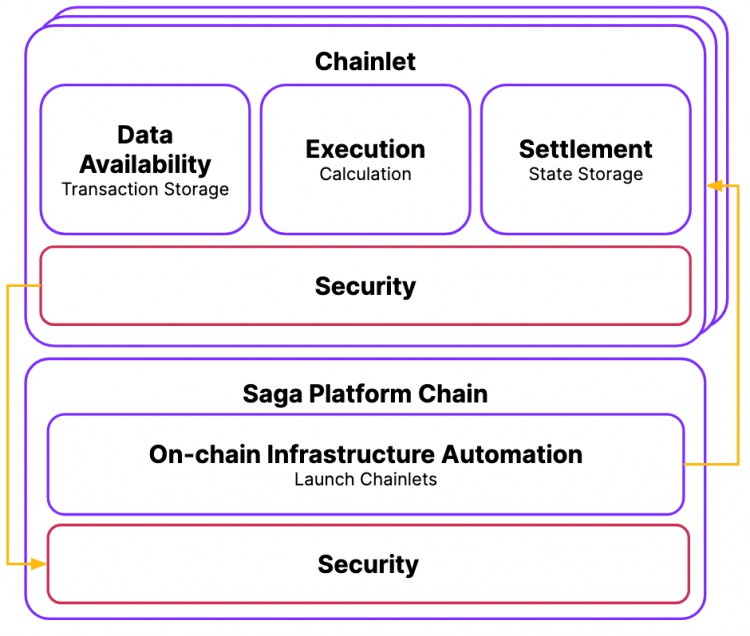
With the technical concept in mind, let's take a look at the technical architecture Saga uses to implement this process.
The Saga Realms framework allows developers to launch customizable features on Saga, such as technology stacks, security sources, and various obligations. Officials say that under the Realms framework, Saga can link 1,000 public chains. Let's take a look at how these are achieved:
Saga's components are divided into three items: Security Chain, Platform Chain and Chainlet. Security Chain and Platform Chain together constitute the Saga main network.
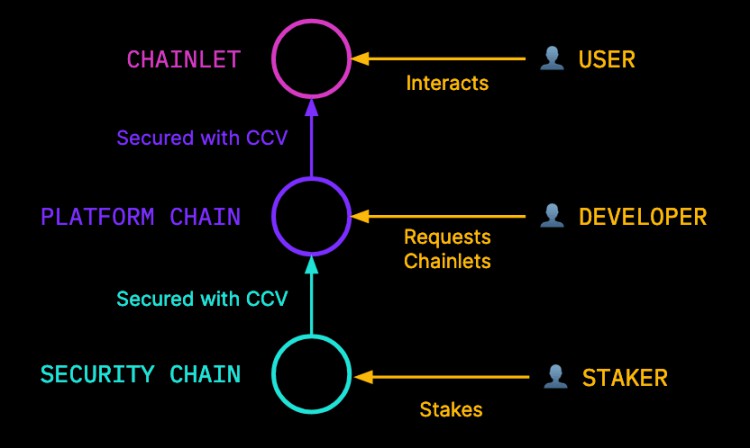
1、Security Chain
Security Chain is constructed using Cosmos-SDK and is one of the Saga mainnet operating modules. Saga nodes are deployed at this layer, and token minting, staking, and destruction are all carried out at this layer.
One of the challenges of deploying application-specific chains based on Cosmos is the complexity of how to protect the chain. Each application chain needs to collect validators, distribute staking tokens
